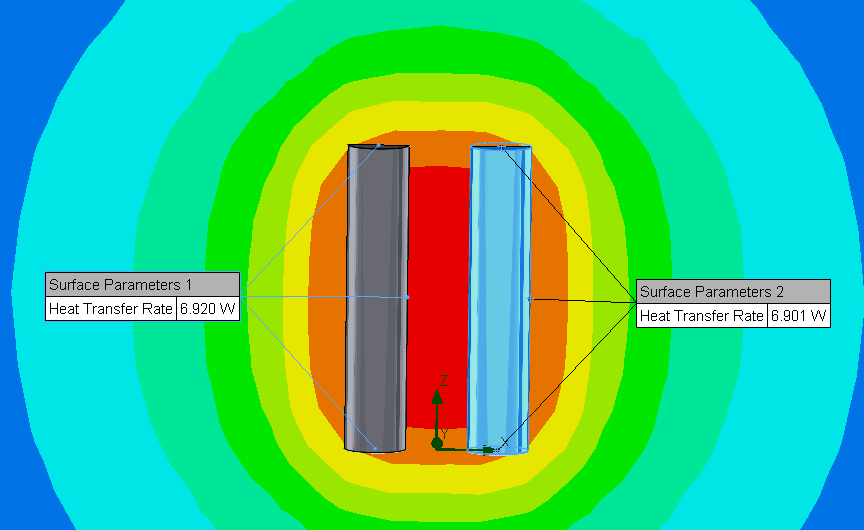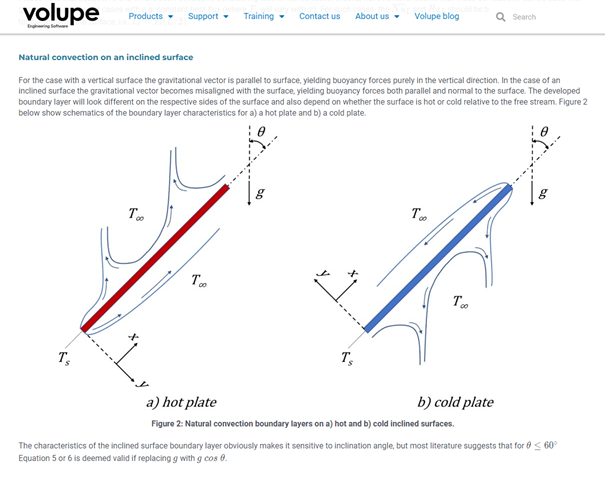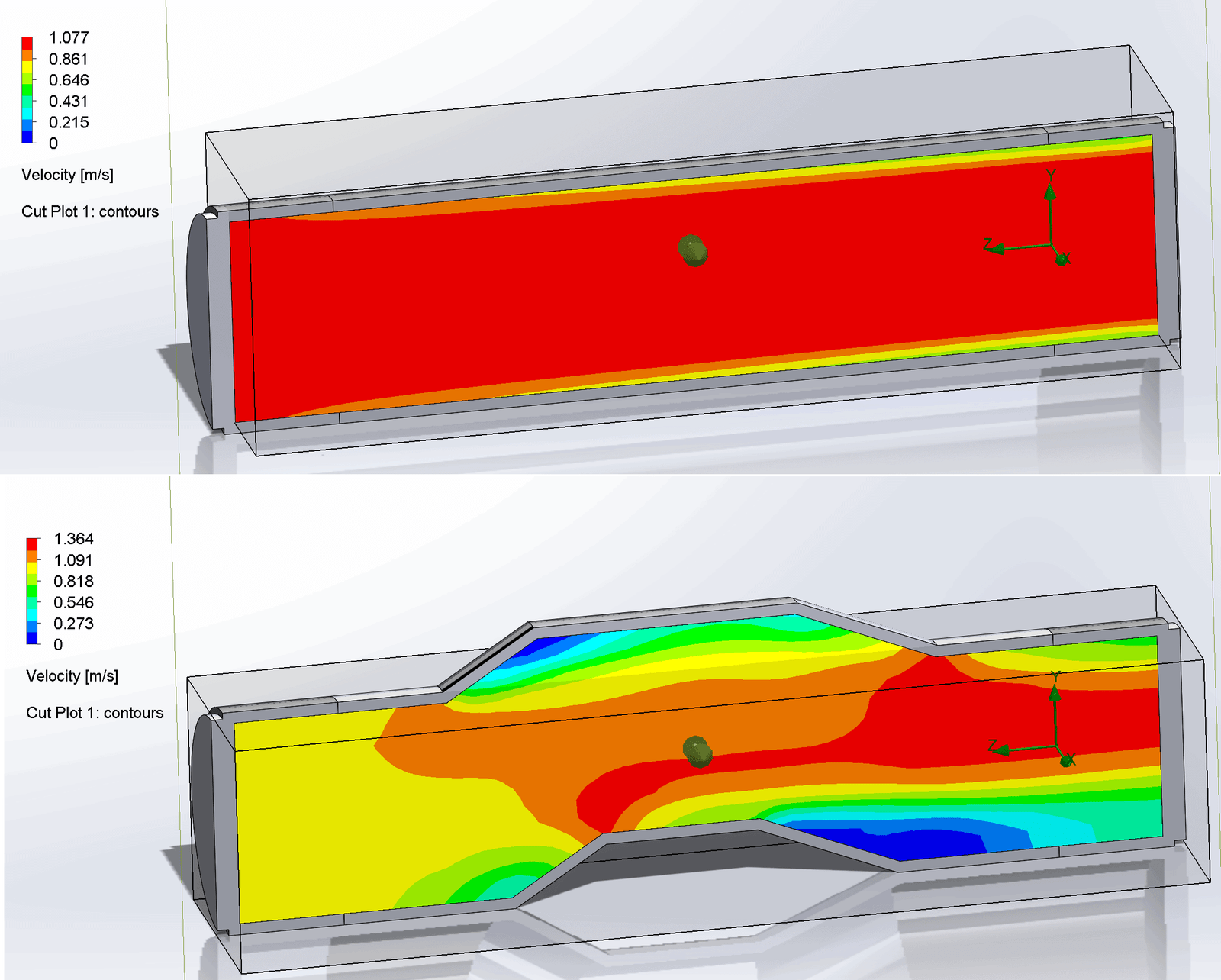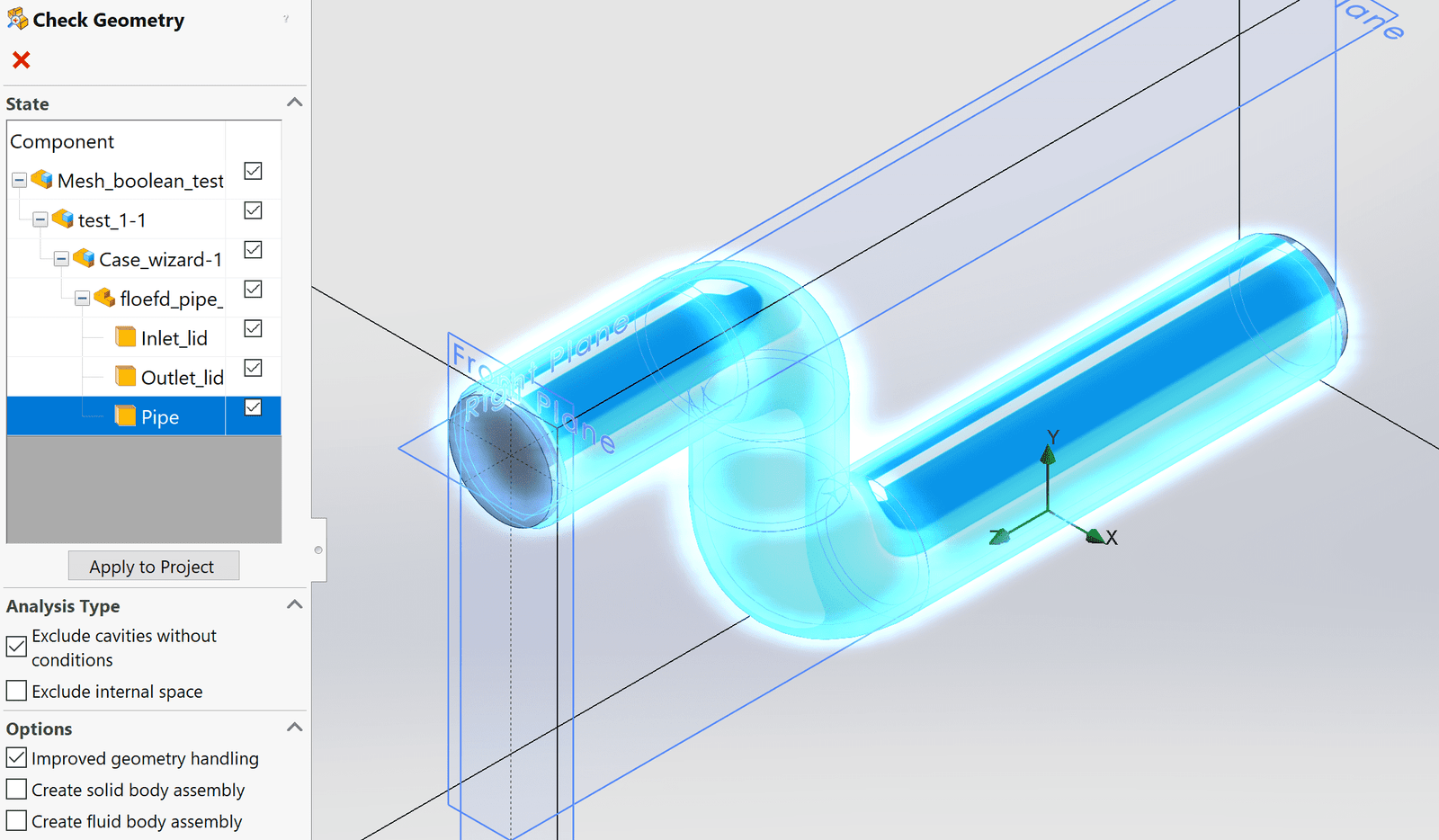Mesh resolution is always important to consider when setting up your simulations. The mesh is the discretized representation of your domain, and for the results to be as accurate as possible we need to create a discretization that is as close to reality as possible. Therefore, we will go through an example in this week’s blog post, where the mesh resolution has great impact on the results for a simulation with heat transfer between the solid and fluid domain in Simcenter FloEFD.
In the example we have two identical cylindrical rods placed parallel to each other. The rods have a combined total heat source of 1000W. In Simcenter FloEFD you can specify a heat source for several components in one heat source, so you don’t have to create one heat source for every source. This is to simplify the process of specifying several heat sources, that have the same heat generation rate. We will evaluate the example by looking at heat transfer rate when the simulation has converged. The simulation will be the steady state of the two rods generating heat in a room with still air.
The first case we will look at is when the two rods are not refined enough. The discretization will be using the same refinement level for both cylinders, meaning that we have one value for the global mesh and no local refinements. In the picture below you will find that the cylinder (solid domain) cross-section is not represented by a perfect circular disc.

This will result in a heat transfer rate that is not identical for the two rods, as shown in the picture below. Since the mesh is not refined enough there will be a difference in discretization for the two rods, and the simulation will not provide a symmetric solution. A symmertric solution is what we would like to have, and what we expect if the discretization captures the geometry.

When we see this result, we start wondering why the solution is not symmetric. When looking at the mesh we understand that the mesh is not refined enough. To test if the mesh resolution is affecting the results we apply a local refinement of the mesh at one of the rods. This results in a second case, where the cross-section of the solid domain is looking like in the picture below.

When running the simulation we obtain a heat transfer rate that differs more than before, since the difference in resolution is larger. You can even see that the temperature field generated by the heat sources is not symmetric.

So, we have to refine our cylinders to capture the circular geometry. By adding refinements like:
- Increased level for the global mesh
- Locally refined solid cells for the cylinders
- Locally refined boundary cells for the transition between solid and fluid cells
we obtain a mesh as in the picture below. This will be the settings for case number three. The discretization captures the circular cross-section of the cylinders with high resolution.

The result of the simulation shows that the temperature field is symmetric and the heat transfer rate is identical for the two rods, see the picture below.

The conclusion we can draw from this example is that, if the physic at the boundary is important, the resolution of the solid surface and the fluid cells at the surface are important to resolve as well. You can of course specify the boundary condition for the heat generation rate for the cylinders individually, but this might not be convenient if you have a large number of cylinders in your simulation. Also, you have to resolve the solid to not affect the fluid flow.
We at Volupe hopes that this blog post has been interesting and that you will have great use of this friendly reminder to always keep the mesh resolution in mind. Especially when having flow around solids, with curved surfaces, and heat transferring between the domains. If you have any questions about your simulation, please send us an email to support@volupe.com.
Author
Christoffer Johansson, M.Sc.
support@volupe.com
+46764479945





